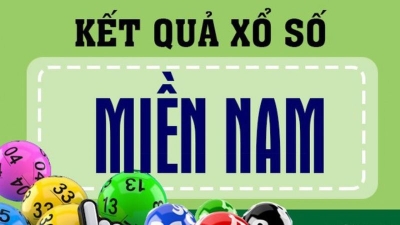
Top 10 trang cá cược bóng đá uy tín hàng đầu hiện nay mang đến cho người chơi những trải nghiệm thú vị với tỷ lệ cược hấp dẫn và các tính năng tiện ích. Các nền tảng này cam kết bảo mật thông tin người chơi, hỗ trợ thanh toán nhanh chóng và dịch vụ CSKH 24/24.Hãy cùng chúng tôi khám phá những trang cá độ bóng đá hàng đầu hiện nay.
Top 10 trang cá cược bóng đá hợp pháp và nổi bật nhất 04/2025
|
Nhà cái |
Điểm mạnh nổi bật của nhà cái |
|
1 |
6686 - Trang cá cược bóng đá online cực uy tín✅ Với các kèo cược luôn được cập nhật theo từng trận đấu, nhà cái uy tín nhất 6686 mang lại tỷ lệ bóng đá hợp lý và cạnh tranh, đặc biệt là các kèo châu Á và châu Âu. ✅ Nhà cái uy tín nhất Việt Nam 6686 thường xuyên triển khai các chương trình khuyến mãi, đặc biệt là tặng thưởng lên đến 100% cho lần gửi tiền đầu tiên và các khuyến mãi khác cho người chơi lâu dài. ✅ Trang cá cược uy tín nhất này luôn chú trọng bảo mật thông tin khách hàng, sử dụng công nghệ mã hóa SSL để bảo vệ dữ liệu & thông tin cá nhân. ✅ Trang web của 6686 được thiết kế thân thiện, dễ dàng cho người mới bắt đầu làm quen và tham gia cá cược. |
|
2 |
Sky88 - Trang web cá độ bóng đá chuyên nghiệp✅ Trang cá cược bóng đá Sky88 luôn đảm bảo mang đến những tỷ lệ cược rất cạnh tranh và luôn được cập nhật nhanh chóng, giúp người chơi dễ dàng lựa chọn kèo phù hợp. ✅ Người chơi tại nhà cái bóng đá uy tín Sky88 có thể nhận các khuyến mãi 50% cho lần gửi tiền đầu tiên hoặc 100% cho những lần cược đầu tiên tại các trận đấu lớn. ✅ Trang cá độ bóng đá trực tuyến Sky88 cung cấp nhiều phương thức thanh toán linh hoạt, bao gồm cả ví điện tử, ngân hàng và thanh toán qua thẻ cào. ✅ Trang cá độ bóng đá uy tín Sky88 cung cấp dịch vụ cá cược trực tiếp giúp người chơi cảm nhận được sự kịch tính của từng trận đấu với hình ảnh sắc nét và tỷ lệ cược cập nhật liên tục. |
|
3 |
Bet88 - Nhà cái uy tín cung cấp tỷ lệ bóng đá chất lượng✅ Trang cá độ bóng đá trực tuyến Bet88 không chỉ có tỷ lệ kèo tốt mà còn cung cấp các kèo cược phong phú, từ kèo châu Á, châu Âu cho đến các kèo đặc biệt. ✅ Trang cá độ bóng đá trực tuyến uy tín Bet88 thường xuyên triển khai các chương trình khuyến mãi hấp dẫn như tặng thưởng lên đến 150% cho người chơi mới và tặng thưởng cược miễn phí 50.000 VND cho các cược thủ cũ. ✅ Trang cá cược bóng đá uy tín Bet88 hỗ trợ nhiều hình thức thanh toán nhanh chóng và an toàn, giúp người chơi dễ dàng nạp và rút tiền bất cứ lúc nào. ✅ Bet88 cam kết bảo vệ thông tin cá nhân của khách hàng và sử dụng công nghệ bảo mật mới nhất để ngăn chặn các hành vi gian lận. |
|
4 |
789Bet - Nhà cái cá độ bóng đá online đáng tin cậy✅ Trang cá cược bóng đá 789Bet luôn đảm bảo kèo nhà cái hợp lý cho tất cả các loại hình cá cược bóng đá, đặc biệt là các kèo hiệp 1 và kèo châu Á. ✅ Các chương trình khuyến mãi tại 789Bet rất phong phú, bao gồm hoàn trả lên đến 10% cho người chơi thua cược, nhà cái khuyên mäi thành viên mới 50k và khuyến mãi cho lần gửi tiền đầu tiên lên tới 200%. ✅ Nhà cái tặng tiền 789Bet cung cấp dịch vụ khách hàng 24/7 qua các kênh chat trực tuyến và điện thoại, luôn sẵn sàng hỗ trợ người chơi trong mọi tình huống. ✅ Nhà cái khuyến mãi 789Bet có ứng dụng di động cho phép người chơi cá cược mọi lúc mọi nơi, giúp tăng trải nghiệm và sự tiện lợi. ✅ Nhà cái này có hệ thống thanh toán rất nhanh chóng, giúp người chơi rút tiền mà không gặp phải bất kỳ vấn đề nào. |
|
5 |
KuWin - Trang cá cược bóng đá với nhiều khuyến mãi hấp dẫn✅ Nhà cái tặng tiền miễn phí KuWin luôn cung cấp những tỷ lệ cược hấp dẫn cho người chơi, đặc biệt với các kèo cược trong các giải đấu lớn như Ngoại Hạng Anh, Champions League. ✅ Người chơi mới tại nhà cái tặng 100k KuWin sẽ nhận được 100% tiền thưởng cho lần gửi tiền đầu tiên và các chương trình ưu đãi đặc biệt dành cho người chơi lâu dài. ✅ Web cá độ bóng đá uy tín KuWin hỗ trợ các phương thức thanh toán tiện lợi và nhanh chóng, giúp người chơi có thể thực hiện giao dịch mà không phải chờ đợi lâu. ✅ Giao diện của nhà cái tặng tiền trải nghiệm KuWin rất dễ sử dụng, người chơi có thể dễ dàng tìm kiếm các trận đấu và tham gia cá cược mà không gặp phải khó khăn nào. |
|
6 |
New88 - Trang cá độ bóng đá online uy tín hợp pháp✅ New88 cung cấp tỷ lệ kèo bóng đá vô cùng cạnh tranh, giúp người chơi tối đa hóa cơ hội thắng lớn. ✅ Với các ưu đãi như tặng 100% cho lần nạp đầu tiên lên đến 2 triệu đồng và nhà cái khuyến mãi thành viên mới 50k, New88 luôn mang đến cơ hội nhận thưởng cao cho người chơi. ✅ Với hệ thống mã hóa bảo mật SSL, New88 cam kết bảo vệ thông tin cá nhân và tài khoản của người chơi. ✅ Người chơi có thể dễ dàng nạp/rút tiền qua các phương thức thanh toán phổ biến như ngân hàng nội địa, ví điện tử. |
|
7 |
Thabet - Trang cá cược bóng đá trực tuyến tỷ lệ kèo hấp dẫn✅ Thabet có hơn 20 giải đấu bóng đá quốc tế để người chơi tham gia cá cược. ✅ Tặng thưởng lên đến 150% cho lần nạp đầu tiên, tối đa 3 triệu đồng và nhà cái khuyến mãi thành viên mới 88k. Ngoài ra, còn có chương trình hoàn tiền hàng tuần lên đến 5%. ✅ Thabet cho phép người chơi theo dõi và cá cược trực tiếp các trận đấu bóng đá hấp dẫn trên nền tảng của mình. ✅ Với các phương thức thanh toán an toàn và nhanh chóng, nhà cái tặng cược miễn phí Thabet giúp người chơi dễ dàng quản lý tài chính cá nhân. ✅ Đội ngũ hỗ trợ của Thabet luôn sẵn sàng giải đáp thắc mắc và hỗ trợ kỹ thuật cho người chơi khi cần. |
|
8 |
Vuabet - Nhà cái uy tín, app cá cược bóng đá chuyên nghiệp✅ Web cá độ bóng đá Vuabet cung cấp kèo bóng đá cao cùng với đa dạng lựa chọn cho người chơi, đặc biệt là các trận đấu lớn. ✅ Chương trình khuyến mãi hấp dẫn của Vuabet tặng đến 5 triệu đồng cho người chơi mới khi nạp lần đầu. ✅ Người chơi có thể dễ dàng nạp/rút tiền qua nhiều phương thức, từ thẻ tín dụng, ví điện tử đến chuyển khoản ngân hàng. ✅ Trang casino trực tuyến Vuabet cam kết luôn có đội ngũ hỗ trợ nhiệt tình, sẵn sàng giúp đỡ mọi vấn đề của người chơi mọi lúc. |
|
9 |
3King - Nhà cái cá cược bóng đá đáng tin cậy✅ Trang cá độ bóng đá 3King luôn cung cấp tỷ lệ kèo tốt nhất cho các trận đấu hàng đầu trên thế giới. ✅ Trang cá độ bóng đá uy tín nhất Việt Nam 3King tặng thưởng lên đến 300% cho lần nạp đầu tiên, giúp người chơi có thể gia tăng cơ hội thắng lớn. ✅ Với thiết kế giao diện dễ sử dụng, trang cá độ bóng đá uy tín 3King giúp người chơi dễ dàng tham gia cá cược mà không gặp khó khăn. ✅ Hệ thống bảo mật của web cá độ bóng đá 3King sử dụng công nghệ mã hóa SSL tiên tiến, giúp bảo vệ an toàn tuyệt đối cho tài khoản người chơi. |
|
10 |
BK8 - Trang cá cược bóng đá trực tuyến kèo nhà cái hot nhất✅ Trang ca do bong da BK8 cung cấp kèo nhà cái cực kỳ hấp dẫn và hợp lý cho người chơi tham gia các giải đấu lớn. ✅ Chương trình tặng thưởng lên đến 2 triệu đồng khi đăng ký và nạp tiền lần đầu. ✅ Trang cá độ bóng đá online BK8 cung cấp dịch vụ phát trực tiếp các trận đấu bóng đá quốc tế để người chơi có thể cá cược và theo dõi cùng lúc. ✅ Hệ thống bảo mật của app cá độ bóng đá BK8 được chứng nhận đạt chuẩn quốc tế, đảm bảo an toàn cho tất cả giao dịch của người chơi. |
Kết luận
Top 10 trang cá cược bóng đá hàng đầu đều mang đến những trải nghiệm tuyệt vời với tỷ lệ kèo hấp dẫn và dịch vụ hỗ trợ CSKH 24/24 chuyên nghiệp. Việc lựa chọn một nhà cái uy tín, phù hợp với nhu cầu cá cược của bạn là rất quan trọng để đảm bảo sự an toàn và cơ hội thắng lớn.






